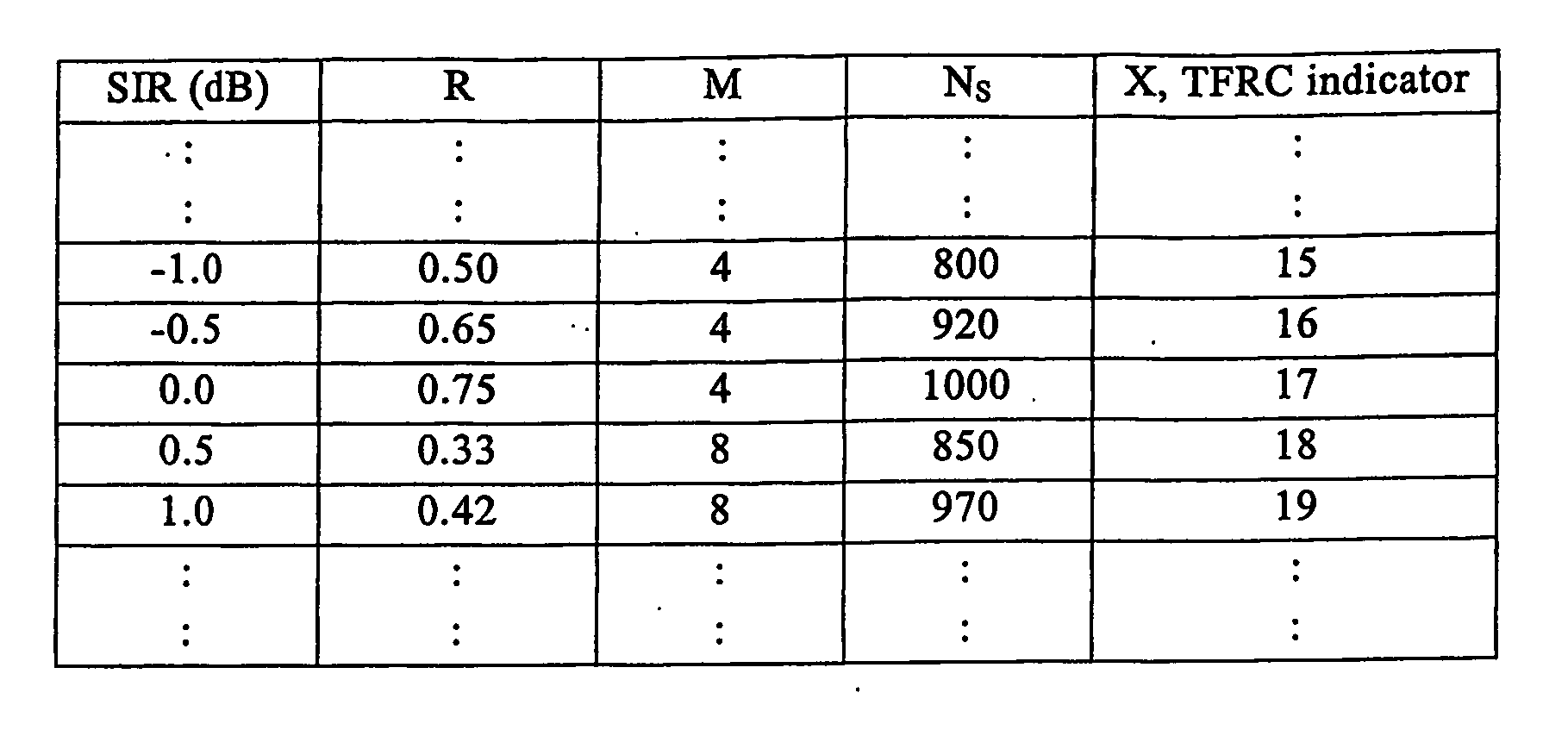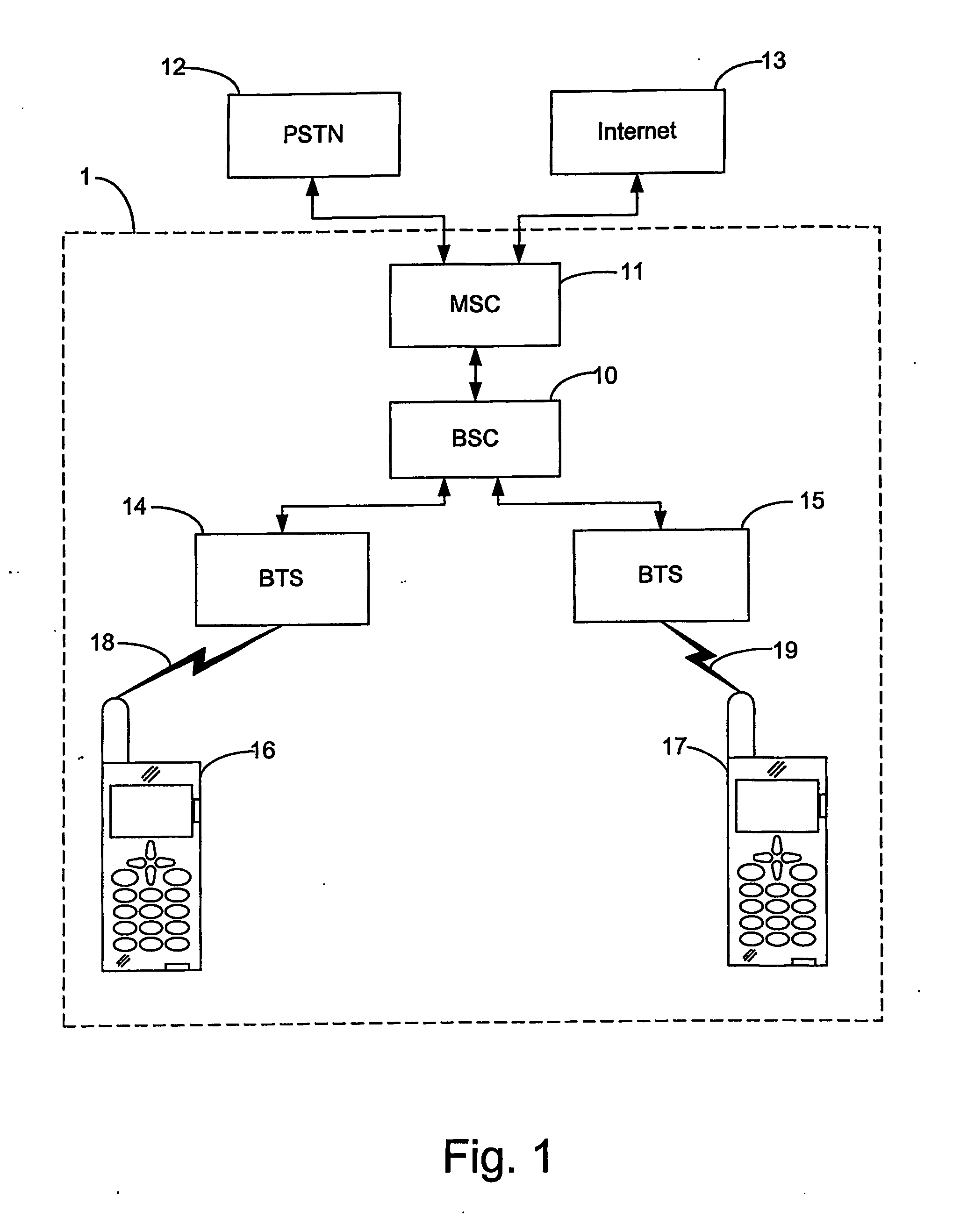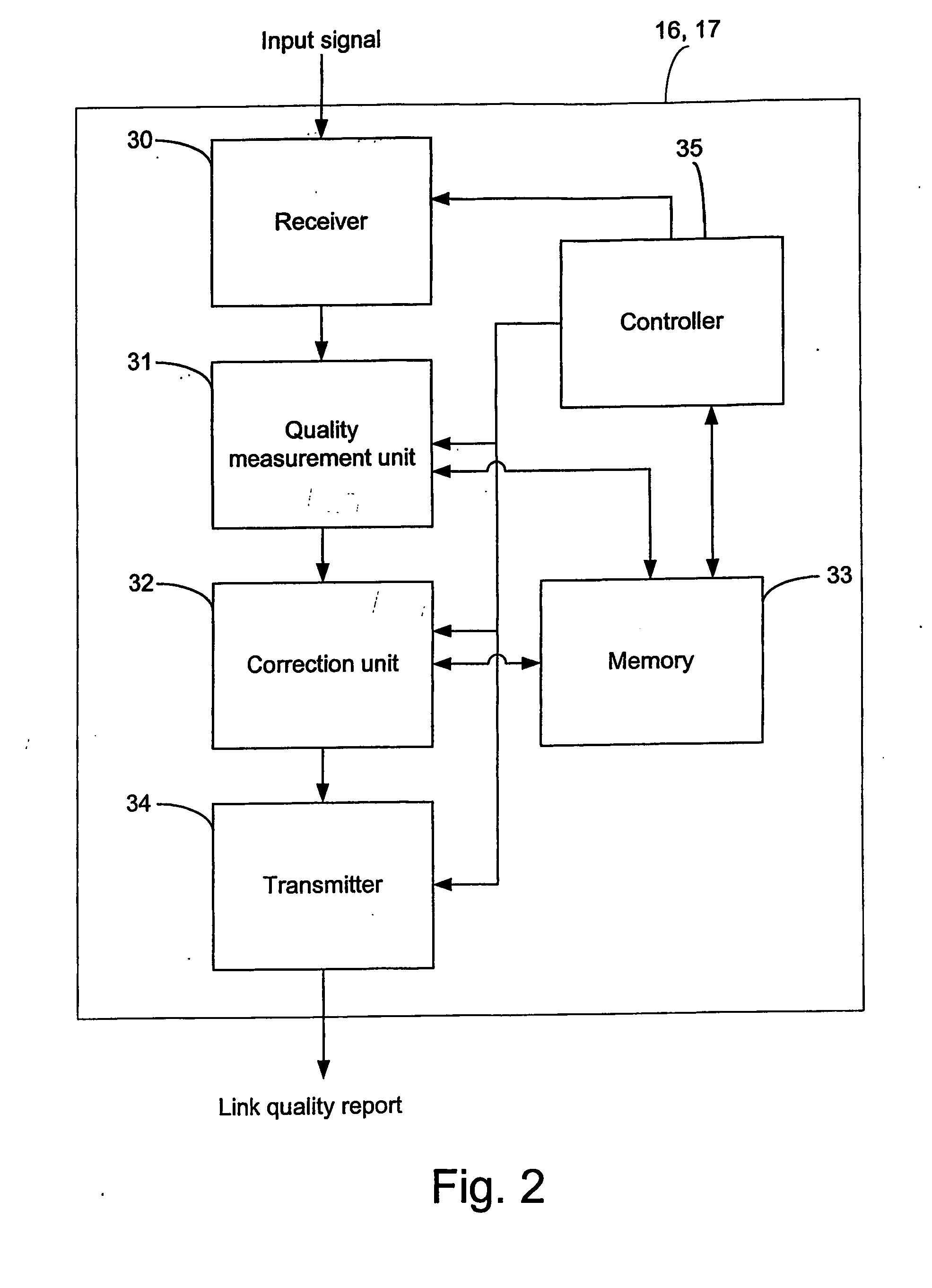Method and apparatus for link adaptation
- Summary
- Abstract
- Description
- Claims
- Application Information
AI Technical Summary
Benefits of technology
Problems solved by technology
Method used
Image
Examples
first embodiment
[0052] According to the invention, TFRC reporting is used. A TP indicator corresponding to a certain SIR value is reported back to the Tx-unit. For the first reporting interval of a transmission session, the measured SIR value is directly mapped against the look-up table comprising SIR values and corresponding TFRC indicators. The lookup-table may e.g. correspond to the table of FIG. 2 without the R and M columns, and be stored in the memory 33. The Rx mapping will convert the measured link quality measure for reporting interval n, such as the SIR value, to a TFRC indicator desired by the Rx-unit, or:
TnRx=fRx(γnRx, Nspec).
The user data size Ns, which will be used by the Tx-unit in a future transmission, is not known by the Rx-unit. Therefore, a value Nspec is known beforehand to both the Rx-unit and the Tx-unit. The TFRC indicator, together with Nspec when appropriate, is for the first reporting interval transmitted to the Tx-unit without any correction.
[0053] When the Tx-unit re...
third embodiment
[0060] According to the invention, the Rx-unit will take care of SIR losses although the TFRC setting at the Tx-unit is not constant during a reporting interval. An advanced scheduler, e.g. as envisaged for UMTS / HS-DSCH, may change the transmission parameter settings and thus the SIR away from the SIR that corresponds to the desired value indicated in the link quality report in order to optimize the performance of the system. Such a scheduler may e.g. use a high code rate and increase the power in case there is a shortage of physical channels to obtain a high data rate. The advanced scheduler may also use a low code rate in case the power is limited but there are physical channels, i.e channelization codes in UMTS / HS-DSCH, available for use.
[0061] The link quality report of the third embodiment may either correspond to a TFRC indicator or a SIR value, according to the previous embodiments. For convenience, reference will only be made to a TFRC reporting below. The Tx-unit will recei...
PUM
 Login to View More
Login to View More Abstract
Description
Claims
Application Information
 Login to View More
Login to View More - R&D
- Intellectual Property
- Life Sciences
- Materials
- Tech Scout
- Unparalleled Data Quality
- Higher Quality Content
- 60% Fewer Hallucinations
Browse by: Latest US Patents, China's latest patents, Technical Efficacy Thesaurus, Application Domain, Technology Topic, Popular Technical Reports.
© 2025 PatSnap. All rights reserved.Legal|Privacy policy|Modern Slavery Act Transparency Statement|Sitemap|About US| Contact US: help@patsnap.com



